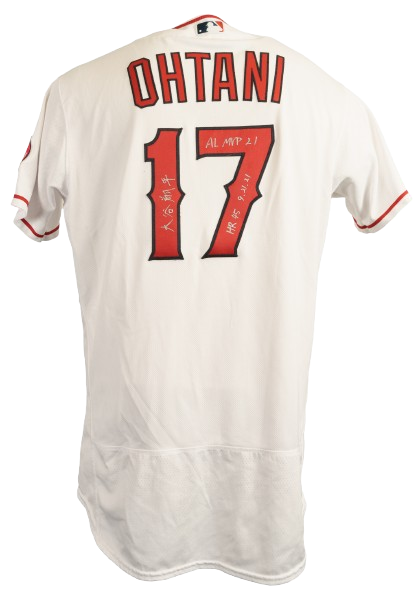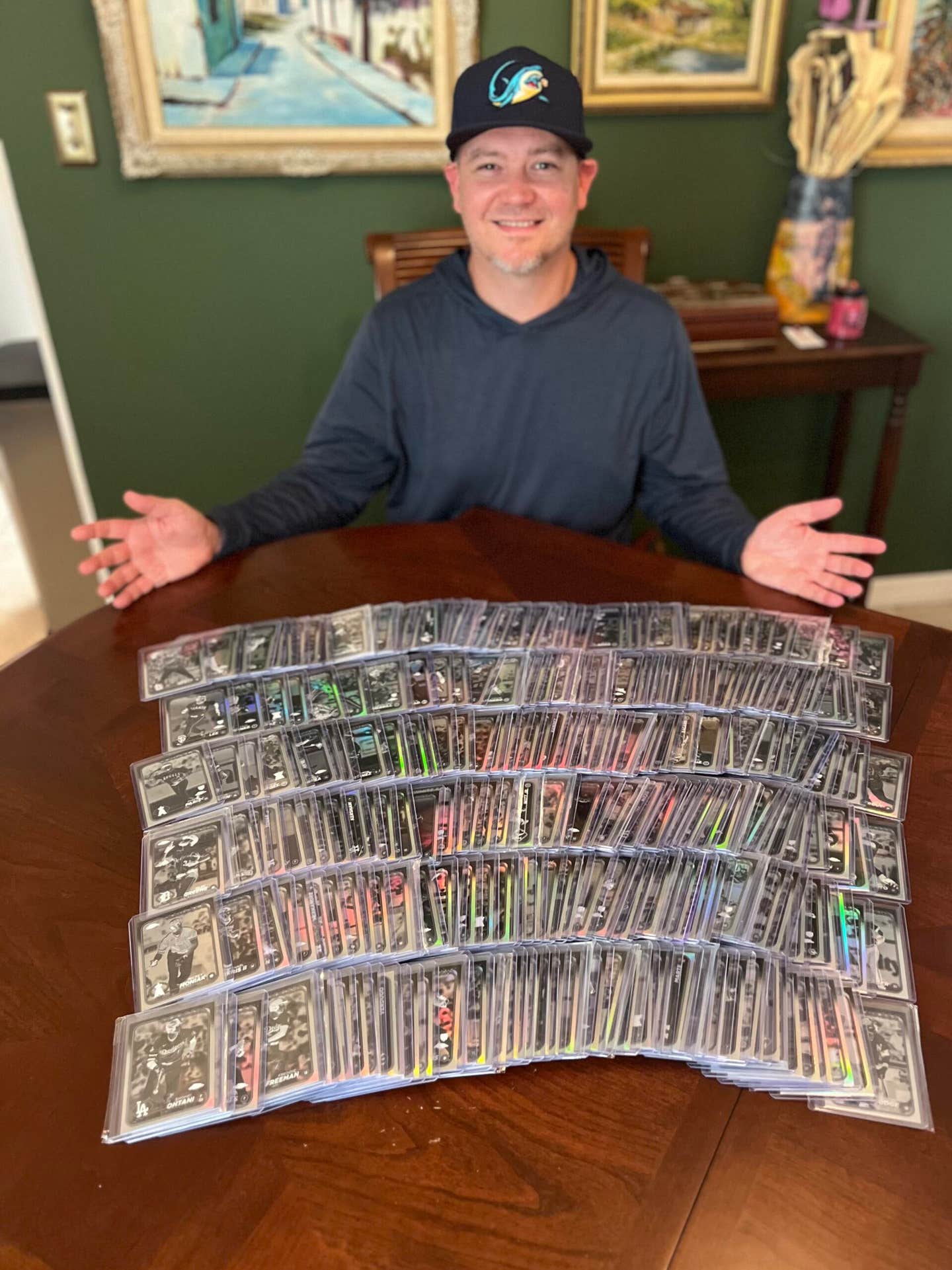Collecting 101
Black to the Future: Collecting The Eight Men Out
The Chicago Black Sox became symbols of sports infamy when they colluded with gamblers to throw the 1919 World Series. The scandal ended the careers of "Shoeless" Joe Jackson, Eddie Cicotte, Buck Weaver, Hap Felsch, Chick Gandil, Lefty Williams, Swede Risberg and Fred McMullin.
But unlike the baseball establishment, hobbyists have never cast the Black Sox away. In fact, almost 90 years after the World Series fix, interest in collecting the "eight men out" is actually growing with each passing year. And if you want to build a Black Sox collection, the pieces are available - for a substantial price.
A significant surge in Black Sox collecting occurred just after theatrical releases of "Eight Men Out" (1988) and "Field of Dreams" (1989). During that time, hobbyist Erik Varon felt a steady pull to collect the notorious players.
"Just after seeing the movie 'Eight Men Out,'" he said, "I purchased my first Black Sox card, a (1919-21) W514 Joe Jackson.Most people are intrigued because of the mystery that still surrounds the scandal. Collecting Black Sox cards is a small way people connect to this historical event and the eight figures involved."
Collectors don't need to be veterans of the hobby to pursue Black Sox material either. One renowned Black Sox expert is 27-year-old Ted Golden, who has spent nearly two decades tracking down rare and valuable cards of the Black Sox. Golden, who also uses the moniker BlackSoxFan, believes the 1919 Sox are "one of the most famous teams in baseball history."
Golden bought his first Black Sox card in 1989. Just a kid at the time, he needed to pull a few strings to obtain the T206 Chick Gandil for $80.
"I saw the card at an area show and asked the dealer if he'd save it for me and let me purchase it at his next show," said the Atlanta-based collector. "So I saved up for two months - I even mowed the lawn. My parents were shocked."
Want to spend an afternoon lost in Black Sox bliss? Both Varon and Golden have gorgeous websites devoted to all things Black Sox, including their personal card collections. They invite all interested hobbyists to visit at www.1919blacksox.com and www.blacksoxfan.com. Many of the cards they display were obtained one at a time, which means each Black Sox find is a story waiting to be told.
"After an 11-year quest, I obtained the elusive Fred McMullin Zeenut card - almost by chance," Varon said. "After telling a local shop owner what I collect, he turned me on to a Pacific Coast League collector who happened to be auctioning off the McMullin card that week. Within four days of going to that shop, I had the McMullin card in my possession."
One of the most memorable additions to Golden's collection is his (1909-11) E90-1 Joe Jackson.
"I got the card for my 16th birthday," he said. "My dad bought it for me instead of a car. It's the one card I know I will never sell."
If he were to sell the rest of his collection tomorrow, Golden could drive away a truckload of new vehicles.
"I have over 70 cards of the 'eight men out' and nearly 200 cards from the rest of the White Sox roster, their Cincinnati World Series opponent, and related figures like Abe Attell, Bill Burns, Charles Comiskey and manager Kid Gleason," he said. "I love this style of collecting because it allows me to collect cards from the 1880s all the way up to the 1930s. You touch on all the great sets and nearly 50 years of baseball."
Golden's passion for collecting led to the creation of his online company, CardPricer.com.
Big Red Machine, 1919 style
While some hobbyists start collecting the Black Sox and the 1919 World Series during their teen or adult years, Susan Dellinger was born into the legacy. Delinger is the granddaughter of Reds Hall of Famer Edd Roush (who patrolled center field against the Black Sox in the Series). Dellinger owns Roush's personal memorabilia, which includes two impressive pieces: the 1919 World Series Championship stickpin and the last ball pitched in the 1919 World Series, signed by Reds hurler Hod Eller.
"We also have the Patek Phillipe gold pocket watch that was awarded to the Reds most valuable player in the 1919 World Series by a Texas oilman," Dellinger said. "This was purely a fan's choice since there was no official MVP in 1919."
These collectibles symbolize all that the Black Sox could have garnered had they not been crooked. Or do they? Roush maintained his entire life that the Reds would have beaten even an honest Sox team. Fans can read all about it in Susan Dellinger's book, Red Legs and Black Sox: Edd Roush and the Untold Story of the 1919 World Series.
Dellinger's book, a worthy literary companion to Eliot Asinof's masterpiece Eight Men Out, is unique in its use of the Reds as the 1919 focal point. One little-known fact woven into Dellinger's narrative is that the Reds were approached by gamblers, too.
Owning any slice of the 1919 World Series or its participants is a collector's dream. That's why Reds cards are worthy complements to a Black Sox collection. One other factor makes them attractive for hobbyists - affordability.
"The cards for Reds players are not nearly as expensive as they are for the Black Sox," Golden said.
Numbers Game
Novice Black Sox collectors know that cards of some of the disgraced players were issued with tobacco and Cracker Jacks. But most new collectors to the Black Sox phenomenon are surprised to learn how many vintage cards exist per player. Black Sox players appeared on cards issued with a variety of products, including ice cream, eggs, bakeries, biscuits and clothiers.
Cicotte and Jackson grace the most cardboard (collectors, however, don't often relinquish their Shoeless Joe items), while Weaver, Gandil and Felsch are featured on a tantalizing variety. But locating cards of the other three players - Williams, Risberg, and McMullin - often leaves collectors feeling like Indiana Jones searching for the Lost Ark of the Covenant.
Adding to the difficulty level is that many of the Black Sox were offered in obscure regional issues, while other sets were only distributed to certain parts of the country.
"The cost and rarity of these cards will test the most determined collectors," Varon said.
One such card is the 1911 Zeenut Buck Weaver, depicting Buck as a San Francisco Seal. Weaver, viewed historically as more sinned against than sinning, is a beloved collectible. His Zeenut card (NM) books at $14,000 (140 times more expensive than a common from the same set). Golden has seen several of these trade hands over the past year, each selling in the $2,000-$4,000 range in G-VG condition.
Frugal collectors interested in pursuing any of the eight Sox from any vintage issue will have to make some serious concessions.
"You're going to be spending a minimum of $50 to pick up a Black Sox card in even the worst of conditions," Golden advised.
Independent auction house results and eBay bidders attest to the kind of coin collectors are willing to dole out for Black Sox cards. Golden reported a (1911) T5 Pinkerton Joe Jackson sold recently at a Mile High auction for more than $182,000, while (1910) T210 versions of Shoeless Joe command in excess of $90,000. An eBay sale of a high-grade Chick Gandil (1910) E90-3 American Caramel card fetched $10,000.
And when Black Sox collectors talk grandiose figures, they mention the sale of "Black Betsy," Jackson's famous bat, auctioned in 2001 for more than half a million dollars.
Collectors who want to join the Black S ox hunt should not let daunting prices scare them off. Autograph seekers can take solace because several of the Sox signatures are affordable.
Erik Varon owns both a Cicotte and a Gandil autograph, and said that most Black Sox autographs sell for hundreds of dollars at least. More reasonably priced Jackson lumber can be found on his 2001 SP Legendary Cuts Debut Bat card. The card surfaces regularly and sells at or around its book price of $300.
Unfortunately, book value is often a poor barometer for pricing vintage Black Sox cards. Consider the (1917-20) M101-6 Felix Mendelsohn set. The set features fabulous real-life player poses, including Jackson ($5,000 NM book value), Weaver ($600), Felsch ($600), Cicotte ($300) and Gandil ($300).
"I'd be a happy man if I could get those cards for those prices," Golden said. He added that each would sell for significantly more than list price, even if severely flawed.
Auction sites are often the first place collectors look when pursuing Black Sox memorabilia. Erik Varon also suggested the big-name card shops and the National Sports Collectors Convention as worthy places for locating Black Sox material.
Confidence Game
Ted Golden offered some tips for hobbyists looking to embark on a Black Sox collection. "Get Eddie's (Cicotte) and Chick's (Gandil) T206 cards," he said. "Cicotte's cards are the easiest to come by. Also, the W514 set is a great place to start. It has seven of the eight Black Sox, sans McMullin, and they are all readily affordable."
When barred from baseball, the eight Sox players were judged collectively. When collected as a group, hobbyists form individual opinions about the players and cards.
"My favorite (player) is Cicotte," Varon offered. "Had it not been for the scandal, he'd likely be a member of the Hall of Fame." But Varon said the card he likes best is his (1916) M101-5 Famous and Barr Buck Weaver.
While Golden has always idolized Jackson, selecting a favorite Black Sox card has never been easy.
"This is like asking a parent who their favorite kid is," he joked. "I really love my (1914) D303 Mother's Bread Felsch, and the (1912) C46 Imperial Tobacco Gandil I own was No. 1 on my want list for years." After mentioning several other cards he concluded, "I love them all."
Despite more than 40 combined years of Black Sox collecting, Golden and Varon are still seeking Black Sox bullion to add to their vast treasures.
"I've been desperately searching for a 1911 E-100 Bishop and Company Buck Weaver, Risberg's 1916 Zeenut, an E94 Baltimore News Boy Cicotte, and Lefty's 1921 D327," Golden said. "Nobody seems to have them. I also want to add a program and ticket stubs from the 1919 World Series games."
"Owning an autograph of the eight Black Sox players would be a great way to complement my card collection," Varon said.
Naturally, Black Sox collectors have been affected by the brisk winds of change in the hobby, most notably grading and population reports. Another interesting tremor occurred at the conclusion of the 2005 baseball season.
"The White Sox World Series title brought people out of the woodwork," Golden said. "I had countless e-mails asking, 'How much for (fill in Black Sox player and card).' A lot of people were heartbroken that most of my items weren't for sale."
In 2019, the Black Sox indignity will be 100 years old. While some might fantasize about a market crash between now and then in hopes of cheaper memorabilia, most hobbyists believe Black Sox collectibles will always command top dollar.
"Because the Black Sox scandal will forever be the most famous event in the history of American baseball," Susan Dellinger said, "anything connected with the 1919 World Series will retain its value for our lifetime, and many lifetimes to come."








